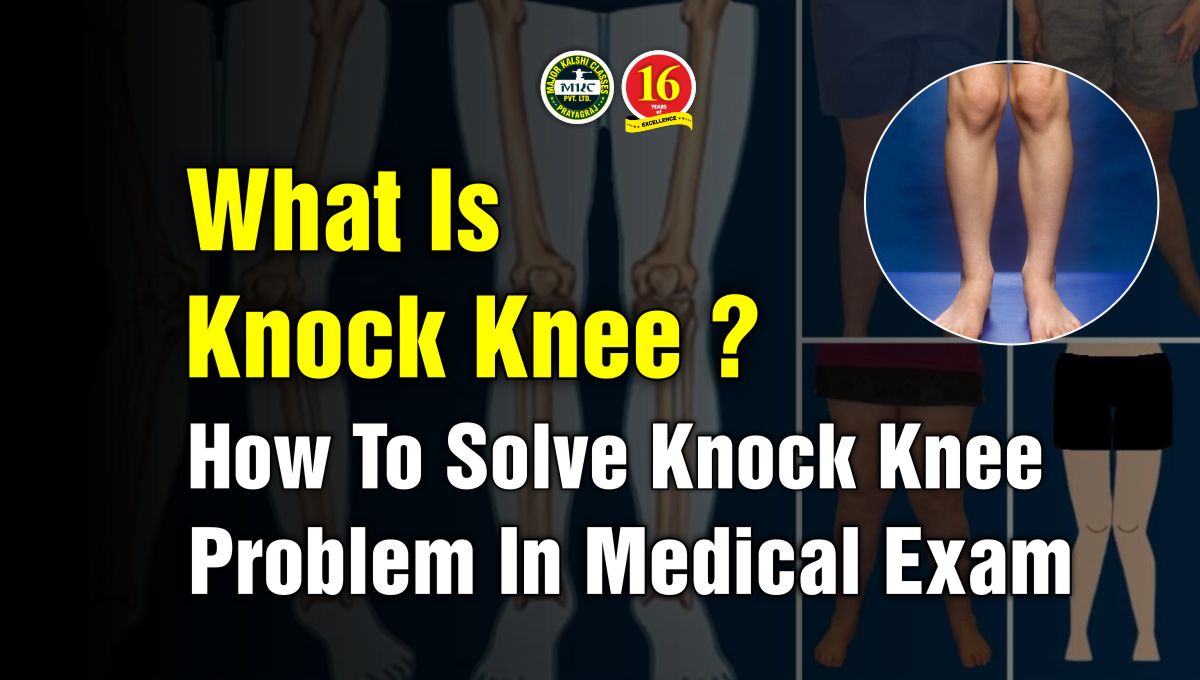What is Knock Knee? How to solve Knock Knee problem in Medical Exam
Knock knee, also known as genu valgum, is a common condition characterized by inward angulation of the knees when standing with the feet together. While often a natural variation, severe cases of knock knee can cause discomfort and potentially impact medical examinations for various purposes. This article aims to provide insights into knock knee and discuss potential solutions for individuals facing the condition during medical exams.
What is Knock Knee:-
Knock knee refers to the misalignment of the lower limbs, where the knees angle inward instead of forming a straight line when standing with the feet together. In most cases, genu valgum is a normal anatomical variant, especially in children during their growth and development phase. However, certain factors can contribute to its development or exacerbation, including genetics, skeletal dysplasia, obesity, or certain medical conditions.
How to solve Knock Knee problem in Medical Examinations
- Evaluation: When faced with knock knee during a medical examination, the first step is to undergo a thorough evaluation by a medical professional. An orthopedic specialist or a physician experienced in musculoskeletal disorders can assess the severity of the condition, determine any underlying causes, and identify any associated complications.
- Mild Cases and Observational Approach: Mild cases of knock knee typically do not require any intervention and may resolve naturally as a person grows. In such cases, a medical examiner may adopt an observational approach, closely monitoring the condition’s progression and its impact on the individual’s overall health and mobility. Regular follow-ups and lifestyle modifications, such as maintaining a healthy weight and engaging in appropriate exercises, may be recommended to manage the condition.
- Physical Therapy and Exercises: For individuals with moderate knock knee, physical therapy can be an effective solution. A trained physical therapist can develop a customized exercise program aimed at strengthening the muscles around the knees and improving overall lower limb alignment. These exercises can help alleviate discomfort, enhance flexibility, and promote proper gait.
- Orthotic Support: In some instances, using orthotic devices, such as shoe inserts or braces, can provide additional support and alignment for individuals with genu valgum. These devices help distribute weight evenly, reducing stress on the knees and promoting optimal lower limb alignment during activities. A medical examiner may assess the appropriateness of orthotic support based on the severity of knock knee and its impact on the individual’s physical function.
- Surgical Intervention: Severe cases of knock knee that significantly impact an individual’s health and mobility may require surgical intervention. However, medical exams often prioritize non-invasive approaches and reserve surgery for exceptional circumstances where conservative measures have proven ineffective or when knock knee presents serious functional limitations.
- Individualized Evaluation for Medical Exams: Each medical examination or certification process has specific guidelines and criteria for assessing individuals with genu valgum. It is essential to consult the relevant medical authority overseeing the examination to understand their specific requirements. Some examinations may consider the overall health, functionality, and fitness of the individual, while others may have more stringent criteria. Obtaining accurate information about the specific standards and guidelines is crucial to adequately prepare for the examination process.
Genu valgum, although commonly observed in individuals, may pose concerns during medical examinations. However, with proper evaluation, appropriate management strategies, and open communication with medical professionals, individuals with knock knee can address the condition effectively.
The approach to solving genu valgum in medical exams varies based on the severity of the condition and the specific requirements of the examination. By understanding the condition and seeking guidance from medical experts, individuals can navigate the examination process with confidence and ensure the best possible outcomes.








